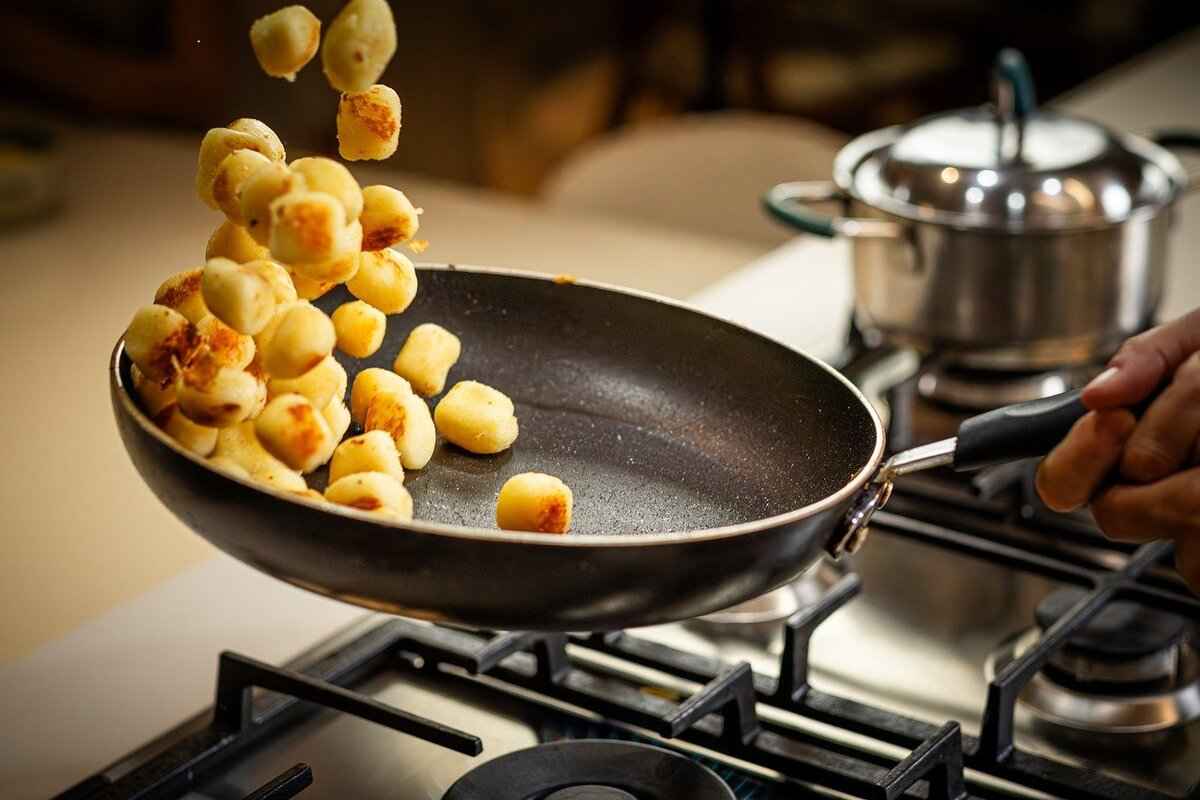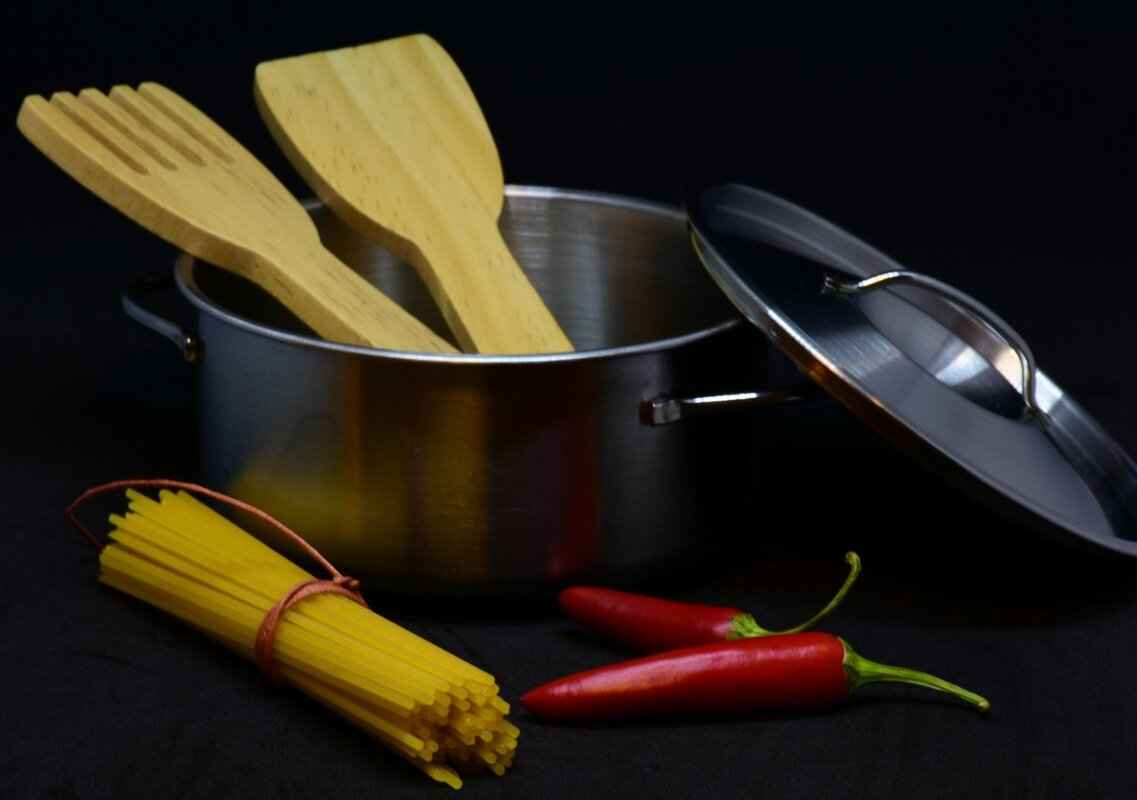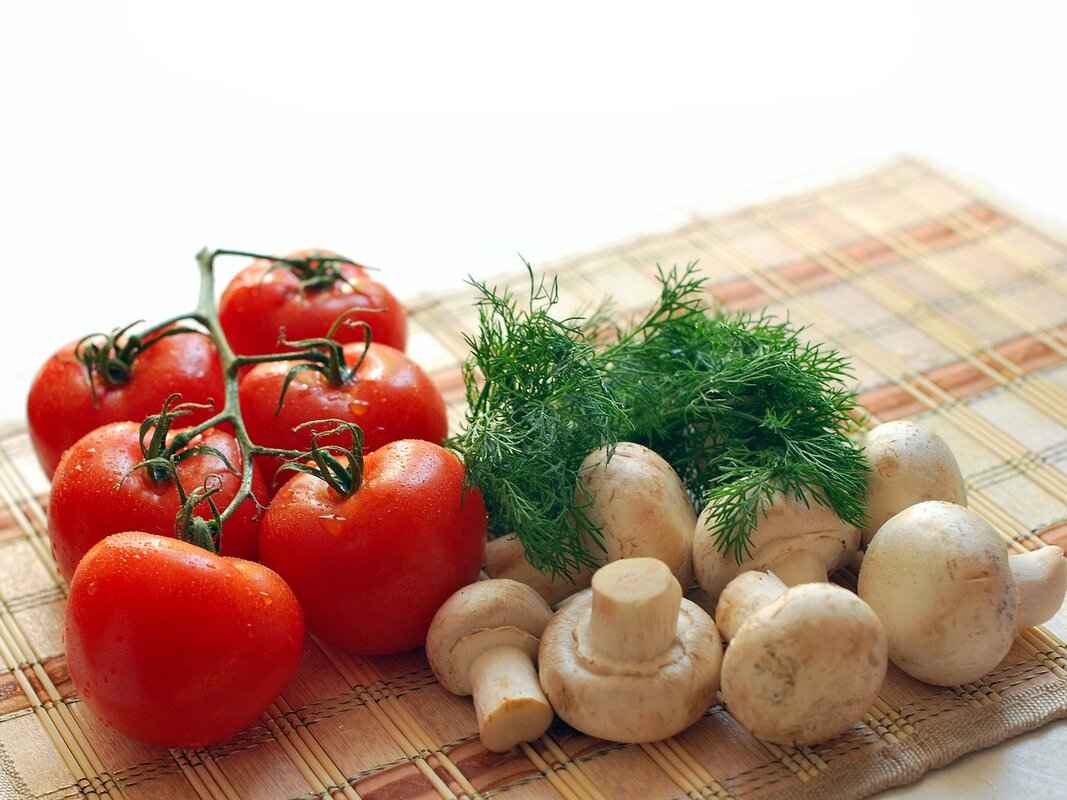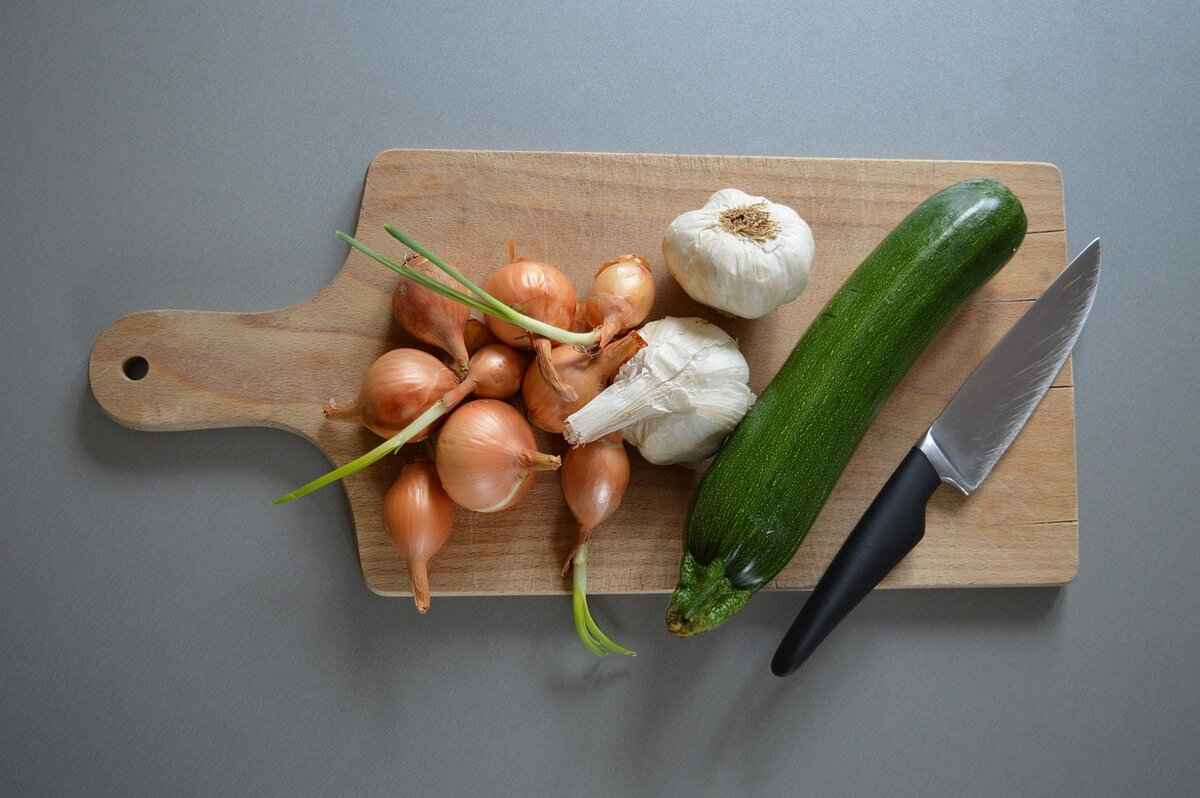This article delves into the culinary delights of cuttlefish, squid, and octopus, providing insights into their unique characteristics, preparation methods, and delicious recipes that will elevate your seafood dishes.
What Are Cuttlefish, Squid, and Octopus?
Understanding the distinctions between these three mollusks is essential for any seafood enthusiast. Each has its own unique flavor profile and texture, influencing how they should be prepared and served. Cuttlefish, with its rich, slightly sweet taste, differs from squid, which is known for its firm and chewy texture. Octopus, on the other hand, offers a tender and savory experience when cooked correctly.
How to Prepare Cuttlefish, Squid, and Octopus?
Preparation techniques are crucial for enhancing the flavors of these seafood types. Here are some essential tips:
- Cleaning Cuttlefish: Start by removing the ink sac, skin, and internal organs. Rinse thoroughly to ensure all remnants are gone.
- Preparing Squid: Remove the beak and quill, then rinse well to prepare for cooking.
- Cleaning Octopus: Rinse under cold water, removing any residual ink and internal organs.
What Cooking Methods Work Best for Squid?
Squid can be prepared using various methods, including:
- Grilling: This method enhances the natural flavors, but be cautious not to overcook it.
- Frying: Frying creates a crispy exterior while keeping the inside tender, making it a popular choice for calamari.
- Braising: This slow-cooking method allows flavors to meld beautifully.
How to Cook Octopus Perfectly?
Cooking octopus can be intimidating, but it can be tender and flavorful with the right techniques:
- Boiling: A common method that helps tenderize the meat and infuse flavors.
- Grilling: Adds a delightful char to the octopus, enhancing its natural taste.
What Are Some Delicious Recipes Featuring Cuttlefish, Squid, and Octopus?
Exploring various recipes can inspire creativity in the kitchen. Here are some popular dishes:
- Cuttlefish Ink Risotto: This dish combines cuttlefish ink with creamy risotto, creating a visually stunning meal.
- Squid Salad with Citrus Dressing: A refreshing salad featuring grilled squid and zesty dressing, perfect for a light meal.
- Grilled Octopus with Lemon and Herbs: Showcasing the natural flavors of octopus, enhanced by a simple marinade.
In conclusion, mastering the art of cooking with cuttlefish, squid, and octopus can transform your seafood dishes into culinary masterpieces. By understanding their unique qualities and employing proper preparation and cooking techniques, you can create delicious meals that impress family and friends alike.

What Are Cuttlefish, Squid, and Octopus?
When it comes to seafood, cuttlefish, squid, and octopus are three popular mollusks that offer distinct flavors and textures. Understanding the differences between these three is crucial for anyone looking to elevate their culinary skills. Each mollusk has unique characteristics that influence how they should be prepared and served, making it essential for chefs and home cooks alike to grasp their individual qualities.
The culinary world is rich with diversity, and these three mollusks are prime examples. Cuttlefish are known for their firm yet tender flesh, often described as having a slightly sweet flavor. This mollusk is often used in Mediterranean cuisine and can be prepared in various ways, including grilling and stuffing.
Squid, on the other hand, is often associated with its delicate texture and mild taste, making it a favorite in dishes like calamari. The versatility of squid allows it to be fried, grilled, or incorporated into salads, enhancing its appeal.
Octopus stands out for its unique texture and rich flavor. When cooked correctly, octopus can be incredibly tender and is often used in Mediterranean and Asian dishes. The preparation of octopus is crucial, as it can easily become rubbery if not cooked properly.
Each of these mollusks requires specific cooking techniques to bring out their best qualities. For instance, cuttlefish benefits from quick cooking methods to retain its tenderness, while squid can be grilled or fried to achieve a crispy exterior. Octopus, however, often requires longer cooking times or specific methods like boiling to ensure it becomes tender.
Moreover, the flavor profiles of these mollusks can significantly influence the choice of accompanying ingredients. For example, cuttlefish pairs well with rich sauces and spices, while squid complements lighter, citrus-based dressings. Octopus can be enhanced with bold marinades and fresh herbs.
Preparation techniques are vital for maximizing flavor and texture. Here are some essential tips:
- Cuttlefish: Clean by removing the ink sac and internal organs. Rinse thoroughly to ensure all remnants are gone.
- Squid: Remove the head and internal organs, then peel off the skin for a cleaner presentation.
- Octopus: Boil or steam before grilling to ensure tenderness, and consider marinating to enhance flavor.
Understanding the most effective cooking methods can greatly impact the final dish:
- Cuttlefish: Best grilled, stuffed, or sautéed to maintain its flavor and texture.
- Squid: Can be grilled, fried, or braised, with each method providing a different taste experience.
- Octopus: Commonly boiled or grilled, with marination enhancing its natural flavors.
In summary, knowing the differences between cuttlefish, squid, and octopus is essential for any seafood lover. Each mollusk offers unique flavors and textures that can be highlighted through proper preparation and cooking techniques. By mastering these aspects, you can create delicious seafood dishes that are sure to impress.

How to Prepare Cuttlefish, Squid, and Octopus?
When it comes to preparing seafood, understanding the nuances of each type is essential for achieving the best flavor and texture. Cuttlefish, Squid, and Octopus are popular seafood options that can elevate any dish when cooked correctly. This guide will provide you with detailed insights and techniques for preparing these delicious mollusks.
Preparation techniques vary for each seafood type. Learning the right methods can enhance flavor and texture, ensuring a delicious dish. Here are essential tips for each mollusk:
Cleaning cuttlefish is crucial for a successful dish. Begin by gently separating the head from the body. Remove the internal organs and the ink sac, which can impart a bitter taste if not cleaned properly. Rinse the cuttlefish thoroughly under cold water to eliminate any remaining bits. This meticulous cleaning process not only improves the taste but also enhances the presentation of your dish.
- Grilling: This method brings out the cuttlefish’s natural sweetness. Marinate beforehand to add flavor.
- Stuffing: Cuttlefish can be stuffed with a variety of ingredients, such as rice or vegetables, and baked for a hearty meal.
- Sautéing: Quick sautéing in olive oil preserves the tenderness of the cuttlefish while adding a delightful crispness.
Squid requires specific cleaning techniques to achieve optimal results. Start by removing the head and internal organs. Be sure to peel away the outer skin, which can be tough. Rinse the squid well to ensure it is clean. Properly prepared squid will have a tender texture, making it a delightful addition to various dishes.
- Grilling: Grilling squid enhances its natural flavors while adding a smoky char. Be cautious not to overcook, as this can lead to a rubbery texture.
- Frying: Frying squid creates a crispy exterior. Coating it in seasoned flour or batter can elevate the dish.
- Braising: Slow cooking squid in a flavorful liquid can make it incredibly tender and infuse it with rich flavors.
Cooking octopus can be intimidating, but with the right techniques, it can be both tender and flavorful. Start by boiling the octopus to tenderize the meat. This method allows the flavors to meld beautifully. After boiling, consider grilling it for added texture and taste.
Grilling octopus adds a unique flavor profile, creating a delightful contrast between charred edges and tender meat. A simple marinade of lemon juice, olive oil, and herbs can enhance the overall taste. Ensure the octopus is cooked just right to avoid toughness.
Exploring various recipes can inspire creativity in the kitchen. Here are some popular dishes:
- Cuttlefish Ink Risotto: A visually stunning dish that combines cuttlefish ink with creamy risotto, creating depth and unique flavors.
- Squid Salad with Citrus Dressing: This refreshing salad features grilled squid paired with a zesty citrus dressing, balancing flavors and textures perfectly.
- Grilled Octopus with Lemon and Herbs: Showcasing the natural flavors of octopus, this dish is enhanced by a simple marinade, making it a delightful choice for seafood lovers.
By mastering these preparation techniques and cooking methods, you can create memorable dishes that highlight the unique flavors of cuttlefish, squid, and octopus.
Cleaning Cuttlefish
is a crucial step in preparing this unique seafood for cooking. Proper cleaning not only enhances the flavor but also improves the presentation of your dish, making it more appealing to the eye and the palate. In this section, we will delve into the essential steps and tips for effectively cleaning cuttlefish, ensuring that you achieve the best results in your culinary endeavors.
When it comes to seafood, cleanliness is paramount. Cuttlefish, like many other mollusks, can harbor impurities that may affect the taste and texture of your dish. By properly cleaning cuttlefish, you remove unwanted flavors and ensure that the natural sweetness of the seafood shines through. Additionally, a well-cleaned cuttlefish is more visually appealing, enhancing the overall dining experience.
- Step 1: Gather Your Tools – You will need a sharp knife, a cutting board, and a bowl for any waste.
- Step 2: Remove the Head – Hold the cuttlefish firmly and gently pull the head away from the body. This will separate the two parts.
- Step 3: Extract the Internal Organs – With the head removed, locate the internal organs and carefully pull them out. Be cautious not to puncture the ink sac, as this can create a mess.
- Step 4: Remove the Ink Sac – The ink sac can be found near the internal organs. Gently detach it and discard it, as it can impart a bitter flavor if left intact.
- Step 5: Peel the Skin – Cuttlefish skin can be tough and chewy. To enhance the texture, peel off the outer skin using your fingers or a knife.
- Step 6: Rinse Thoroughly – After all the internal parts have been removed, rinse the cuttlefish under cold running water to remove any residual impurities.
Here are a few tips to make the cleaning process smoother:
- Work Quickly – Cuttlefish can spoil quickly, so it’s best to clean them as soon as possible after purchase.
- Use Gloves – Wearing kitchen gloves can help keep your hands clean and prevent any slippery accidents while handling the cuttlefish.
- Practice Makes Perfect – The more you clean cuttlefish, the more comfortable you will become with the process. Don’t hesitate to practice!
Once cleaned, cuttlefish can be prepared in various ways, such as grilling, stuffing, or sautéing. Each method brings out different flavors, making cuttlefish a versatile ingredient in many dishes. Remember, the way you present your dish can elevate the overall dining experience. Consider garnishing with fresh herbs or serving on a vibrant plate to make your dish stand out.
In summary, cleaning cuttlefish is an essential skill that enhances both the flavor and presentation of your seafood dishes. By following the steps outlined above and incorporating some practical tips, you can ensure that your cuttlefish is not only clean but also ready to be transformed into a culinary masterpiece.
Steps to Clean Cuttlefish
Cleaning cuttlefish is an essential skill for anyone looking to prepare this delicious mollusk. Proper cleaning not only enhances the flavor but also ensures a visually appealing dish. Here are the detailed steps to clean cuttlefish effectively.
- Start with Fresh Cuttlefish: Always choose fresh cuttlefish for the best flavor. Look for firm bodies and clear eyes.
- Remove the Head: Gently grasp the head and pull it away from the body. This should be done with care to avoid tearing the flesh.
- Extract the Internal Organs: After separating the head, you will notice the internal organs. Carefully pull them out, ensuring you remove everything, including the ink sac. The ink sac can be used in various recipes, so handle it gently.
- Clean the Body: Rinse the cuttlefish body under cold running water. Be thorough to remove any remaining internal organs or debris.
- Remove the Skin: The skin of the cuttlefish is edible but can be tough. If you prefer a cleaner look, gently peel it off, starting from one end. Use a knife if necessary.
- Check for Residual Ink: Inspect the body for any remaining ink. Rinse again if needed to ensure a clean appearance.
- Final Rinse: Give the cuttlefish a final rinse under cold water. This step is crucial to ensure that all remnants are gone, which will enhance the final dish.
- Cut into Desired Shapes: Depending on your recipe, you may want to slice the cuttlefish into rings, strips, or leave it whole for stuffing. Use a sharp knife for clean cuts.
By following these steps, you can prepare cuttlefish that is ready for cooking. Properly cleaned cuttlefish can be grilled, sautéed, or used in a variety of dishes, offering rich flavors and textures that delight the palate.
Cleaning cuttlefish properly is vital for several reasons:
- Flavor Enhancement: Residual organs or ink can impart a bitter taste, negatively affecting the dish.
- Presentation: A well-cleaned cuttlefish looks more appealing on the plate, enhancing the dining experience.
- Food Safety: Proper cleaning helps eliminate any potential contaminants, making the dish safer to consume.
Once cleaned, cuttlefish can be prepared using various cooking techniques:
- Grilling: This method enhances the natural flavors while adding a smoky char. Ensure not to overcook to maintain tenderness.
- Stuffing: Cuttlefish can be stuffed with a mixture of herbs, spices, and other seafood, making for a hearty dish.
- Sautéing: Quick cooking in a hot pan with olive oil can bring out the delicate flavors of cuttlefish.
In conclusion, mastering the cleaning of cuttlefish is a crucial step in preparing delightful seafood dishes. With these steps and methods, you can elevate your culinary skills and impress your guests with delicious cuttlefish meals.
Cooking Techniques for Cuttlefish
Cuttlefish, a member of the cephalopod family, is a delightful seafood option known for its tender texture and rich flavor. When it comes to cooking cuttlefish, several techniques can be employed to bring out its best qualities. This section will explore the various methods, ensuring you can create delicious dishes that highlight the unique taste of cuttlefish.
Grilling Cuttlefish: A Smoky DelightGrilling is one of the most popular methods for preparing cuttlefish. This technique enhances its natural flavors while imparting a delightful smoky char. To achieve the perfect grilled cuttlefish:
- Marinate the cuttlefish in olive oil, garlic, and herbs for at least 30 minutes to infuse flavor.
- Preheat the grill to medium-high heat.
- Grill for about 2-3 minutes on each side, ensuring not to overcook, as this can lead to a rubbery texture.
The result is a tender, flavorful dish that pairs beautifully with a squeeze of fresh lemon juice.
Stuffing Cuttlefish: A Flavorful TwistStuffing cuttlefish is another excellent way to enjoy this versatile seafood. This method allows for creativity with fillings, ranging from rice and vegetables to seafood mixtures. Here’s how to prepare stuffed cuttlefish:
- Begin by cleaning the cuttlefish and setting aside the tentacles.
- Prepare a filling using cooked rice, chopped tentacles, herbs, and spices.
- Stuff the mixture into the cuttlefish bodies and secure the openings with toothpicks.
- Cook in a pan with olive oil until golden brown, then add a splash of white wine to deglaze and simmer.
This method not only adds flavor but also creates an impressive presentation for your guests.
Sautéing Cuttlefish: Quick and EasySautéing is a quick and effective way to cook cuttlefish, preserving its delicate flavor and texture. This method is ideal for a fast weeknight meal. Here’s a simple sautéing technique:
- Slice the cleaned cuttlefish into rings or strips.
- Heat a tablespoon of olive oil in a skillet over medium heat.
- Add the cuttlefish and cook for 2-4 minutes, stirring frequently until just cooked through.
- Season with salt, pepper, and a sprinkle of fresh herbs before serving.
Sautéed cuttlefish can be served over pasta, rice, or a fresh salad, making it a versatile addition to your meal.
ConclusionIn summary, cuttlefish can be enjoyed in various ways, from grilling and stuffing to sautéing. Each technique brings out its unique flavors and textures, making it a versatile ingredient in your culinary repertoire. Whether you are preparing a casual dinner or an elegant feast, mastering these cooking methods will elevate your seafood dishes and impress your guests. Experiment with different marinades and fillings to discover your favorite way to enjoy this delicious mollusk.
Preparing Squid for Cooking
When it comes to seafood, squid is a versatile ingredient that can elevate any dish with its unique flavor and texture. However, to truly enjoy the deliciousness of squid, it is essential to master the art of preparation. Proper cleaning and preparation techniques not only enhance the taste but also ensure that the squid retains its tender and juicy qualities. Here, we will explore the necessary steps for preparing squid, along with tips to achieve the best results in your cooking.
Cleaning squid properly is crucial for several reasons. First, it removes any unwanted parts that can affect the flavor and texture. Second, it helps in achieving a visually appealing presentation. Lastly, ensuring that the squid is cleaned thoroughly prevents any unpleasant taste that may arise from residual organs or ink. Here’s how to clean squid effectively.
- Gather Your Tools: You will need a sharp knife, a cutting board, and a bowl for the cleaned squid.
- Remove the Head: Start by gently pulling the head away from the body. Be cautious to avoid tearing the body.
- Extract the Internal Organs: After separating the head, you will find the internal organs. Gently pull them out, including the ink sac, which is usually located near the head.
- Peel the Skin: The skin of the squid can be left on for cooking, but if you prefer a cleaner look, you can peel it off. This step is optional.
- Rinse Thoroughly: Rinse the squid under cold running water to remove any remaining bits of organs and to clean the inside of the body.
- Cut as Desired: Depending on your recipe, you may want to slice the squid into rings or leave it whole.
Once you have cleaned the squid, the next step is to choose the right cooking method. Different methods can yield varying textures and flavors.
Grilling squid is a popular method that enhances its natural flavors. To grill squid:
- Marinate: A simple marinade of olive oil, garlic, and lemon juice can elevate the flavor.
- Preheat the Grill: Ensure your grill is hot before placing the squid on it to achieve a nice char.
- Avoid Overcooking: Squid cooks quickly, so grill for just a few minutes on each side until it’s opaque.
Frying is another excellent way to prepare squid, resulting in a crispy exterior while keeping the inside tender. Here’s how to fry squid:
- Coat in Flour: Dredge the cleaned squid in flour or a batter for a crispy finish.
- Heat the Oil: Use a deep skillet or fryer with hot oil for frying.
- Fry Until Golden: Fry the squid for 2-3 minutes until golden brown, making sure not to overcrowd the pan.
To achieve the best results when preparing squid, consider the following tips:
- Freshness is Key: Always opt for fresh squid for the best flavor and texture.
- Do Not Overcook: Overcooking squid can lead to a rubbery texture, so keep an eye on cooking times.
- Experiment with Flavors: Squid can absorb flavors well, so don’t hesitate to experiment with different seasonings and marinades.
By following these steps and tips for preparing squid, you can ensure a delightful culinary experience that showcases the unique qualities of this seafood. With proper cleaning and the right cooking techniques, squid can become a star ingredient in your kitchen.

What Cooking Methods Work Best for Squid?
When it comes to preparing squid, understanding the various cooking methods is essential for achieving the best flavor and texture. Squid, known for its delicate taste and unique texture, can be transformed into a culinary delight through different techniques. In this section, we will explore the best cooking methods for squid, including grilling, frying, and braising, while highlighting how each method can enhance the overall dining experience.
Squid can be cooked using several methods, each offering distinct taste experiences and textures. Here, we will delve into three popular techniques: grilling, frying, and braising.
- Grilling Squid: Grilling is a fantastic way to bring out the natural flavors of squid. The high heat caramelizes the exterior, creating a delightful smoky char while keeping the inside tender. To achieve the best results, it is crucial to marinate the squid beforehand. A simple marinade of olive oil, garlic, and lemon juice can enhance the flavor profile. Additionally, avoid overcooking, as squid can become rubbery if left on the grill for too long.
- Frying Squid: Frying squid is another popular method that results in a crispy exterior. This technique often involves coating the squid in seasoned flour or batter before frying. The result is a deliciously crunchy texture that contrasts beautifully with the tender meat inside. For an added twist, consider making calamari by cutting the squid into rings and serving it with a zesty dipping sauce, such as marinara or aioli.
- Braising Squid: Braising is a slower cooking method that allows flavors to meld beautifully. This technique involves cooking squid in a flavorful liquid, such as wine, broth, or tomato sauce, over low heat for an extended period. The result is incredibly tender squid, infused with the rich flavors of the braising liquid. Dishes like squid stew or squid in tomato sauce are perfect examples of this method.
Each cooking technique offers unique advantages, allowing chefs to highlight the squid’s natural flavors while creating varied textures. Whether you prefer the charred notes from grilling, the crunch from frying, or the deep flavors from braising, squid is a versatile ingredient that can be adapted to suit any palate.
In addition to these methods, it’s essential to consider the preparation of squid before cooking. Proper cleaning and cutting can significantly impact the final dish. For instance, removing the skin and internal organs ensures a cleaner taste, while cutting squid into uniform pieces promotes even cooking.
Experimenting with different cooking methods can lead to exciting culinary discoveries. Don’t hesitate to try various marinades, seasonings, and accompaniments to find your perfect squid dish. With the right techniques and a bit of creativity, squid can become a star ingredient in your seafood repertoire.
Grilling Squid
Grilling squid is a culinary art that not only enhances its natural flavors but also imparts a delightful smoky char that elevates its taste profile. This cooking method transforms squid into a succulent dish that can be enjoyed in various cuisines around the world. However, the key to achieving perfection lies in understanding how to grill squid without compromising its tenderness and juiciness.
Grilling squid offers numerous advantages. The direct heat from the grill caramelizes the sugars on the surface, creating a crispy exterior while sealing in moisture. This results in a dish that is both flavorful and visually appealing. Additionally, the smoky aroma adds an irresistible element that enhances the overall dining experience.
- Cleaning: Start by cleaning the squid thoroughly. Remove the head, internal organs, and ink sac. Rinse under cold water to ensure all impurities are removed.
- Cutting: Slice the squid into rings or leave it whole, depending on your preference. If grilling whole, score the surface lightly to help it cook evenly.
- Marinating: A simple marinade of olive oil, lemon juice, garlic, and herbs can enhance the flavor. Marinate for at least 30 minutes, but avoid prolonged marination as it can make the squid tough.
When it comes to grilling squid, a few techniques can help you achieve the best results:
- Preheat the Grill: Ensure your grill is hot before placing the squid on it. A hot grill will create a nice sear and prevent sticking.
- Cooking Time: Squid cooks quickly, typically in 2-3 minutes per side. Overcooking can lead to a rubbery texture, so watch it closely.
- Using Skewers: For easier handling, consider threading squid onto skewers. This method also allows for even cooking and easy flipping.
Grilled squid pairs wonderfully with a variety of side dishes and sauces. Consider serving it with:
- Chimichurri Sauce: This vibrant sauce made with parsley, garlic, and vinegar complements the smoky flavors of grilled squid.
- Fresh Salads: A light salad with citrus dressing can balance the richness of the grilled squid.
- Grilled Vegetables: Seasonal vegetables, grilled alongside the squid, make for a colorful and nutritious plate.
To ensure your grilled squid turns out perfectly every time, keep these tips in mind:
- Use Fresh Squid: Fresh squid is always preferable to frozen, as it has a better texture and flavor.
- Experiment with Flavors: Try adding spices or herbs to your marinade to create unique flavor profiles.
- Rest Before Serving: Allow the grilled squid to rest for a few minutes before serving. This helps retain its juices.
In summary, grilling squid is a rewarding culinary experience that brings out its best qualities. By following the right preparation and grilling techniques, you can create a dish that is not only delicious but also visually stunning. Whether served as an appetizer or a main course, grilled squid is sure to impress your guests and elevate your seafood repertoire.
Frying Squid
Frying squid is a popular cooking method that results in a delightful contrast of textures. The process creates a crispy exterior while preserving the tender, juicy interior, making it a favorite among seafood enthusiasts. This cooking technique not only enhances the squid’s natural flavors but also allows for creative variations through breading or battering, which can introduce additional flavors and textures to the dish.
Frying is a versatile cooking method that can elevate squid dishes to new heights. The high heat of frying quickly cooks the squid, sealing in moisture and ensuring that the inside remains tender. This method is particularly effective because squid cooks rapidly, and frying helps prevent overcooking, which can lead to a rubbery texture.
To achieve the perfect fry, it is essential to start with fresh squid. Begin by cleaning the squid properly, removing the skin and internal organs. Once cleaned, cut the squid into rings or strips, depending on your preference. Here are some key steps to follow:
- Choose the Right Coating: A simple flour coating can be enhanced with spices or herbs. Alternatively, a batter made from flour, cornstarch, and sparkling water can add a light and airy texture.
- Heat the Oil: Use a deep-frying oil with a high smoke point, such as canola or peanut oil. Heat the oil to around 350°F (175°C) for optimal frying.
- Fry in Batches: Avoid overcrowding the pan, as this can lower the oil temperature and result in soggy squid. Fry in small batches for about 2-3 minutes until golden brown.
- Drain and Serve: Once fried, drain the squid on paper towels to remove excess oil. Serve immediately for the best texture and flavor.
Fried squid can be customized in numerous ways. Consider these variations to enhance your dish:
- Spicy Calamari: Add cayenne pepper or paprika to your flour mixture for a spicy kick.
- Herb-Infused Batter: Mix fresh herbs like parsley or basil into your batter for added flavor.
- Serve with Dipping Sauces: Pair fried squid with various dipping sauces, such as marinara, aioli, or a zesty lemon vinaigrette.
While frying may not be the healthiest cooking method, squid itself is a nutritious seafood option. It is low in calories and high in protein, making it a great choice for those looking to maintain a balanced diet. Additionally, squid is rich in essential nutrients, including:
- Omega-3 Fatty Acids: Beneficial for heart health.
- Vitamin B12: Important for nerve function and energy production.
- Minerals: Such as selenium and copper, which contribute to overall health.
In conclusion, frying squid is a delightful way to enjoy this versatile seafood. With the right techniques and creative variations, you can create a dish that is both flavorful and satisfying. Whether you are serving it as an appetizer or a main course, fried squid is sure to impress your guests and elevate your culinary repertoire.

How to Cook Octopus Perfectly?
Cooking octopus can be a daunting task for many, but with the right techniques and a little patience, you can create a dish that is both tender and flavorful. Understanding the cooking process is essential for achieving the best results, and this guide will walk you through various methods to ensure your octopus is cooked to perfection.
One of the main reasons cooking octopus can be intimidating is its unique texture. If not prepared correctly, octopus can become chewy and rubbery. The key to successful cooking lies in understanding its anatomy and the science behind tenderizing its meat.
There are several effective methods for cooking octopus, each offering distinct flavors and textures. Here are the most popular techniques:
- Boiling
- Grilling
- Braising
Boiling is a widely used method for cooking octopus. It helps to tenderize the meat while allowing it to absorb flavors from the cooking liquid. Here’s how to do it:
1. Fill a large pot with water and add salt, herbs, or aromatics like garlic and onion.2. Bring the water to a rolling boil.3. Add the octopus and reduce the heat to a simmer.4. Cook for approximately 30-45 minutes, depending on the size of the octopus.5. Check for tenderness by piercing the thickest part with a fork.
Grilling octopus adds a delicious smoky flavor and creates a delightful contrast between the charred exterior and the tender interior. To grill octopus effectively:
1. After boiling, let the octopus cool and then cut it into manageable pieces.2. Marinate the pieces in olive oil, lemon juice, and herbs for at least 30 minutes.3. Preheat your grill to medium-high heat.4. Grill the octopus for about 3-4 minutes on each side until charred.
Braising is another excellent method for cooking octopus, particularly if you want to infuse it with rich flavors. This slow-cooking technique allows the octopus to become incredibly tender. Here’s a simple braising method:
1. Sear the octopus in a hot pan with olive oil until browned.2. Add your choice of broth, wine, or tomato sauce.3. Cover and simmer on low heat for 1-2 hours until tender.
Once you master the cooking techniques, you can experiment with various recipes. Here are a few delicious options:
- Octopus Salad: Combine grilled octopus with fresh vegetables, olives, and a tangy dressing.
- Octopus Pasta: Toss tender octopus with pasta, garlic, and a light tomato sauce for a delightful meal.
- Octopus Tacos: Use grilled octopus as a filling for tacos, topped with fresh salsa and avocado.
With these techniques and recipes, cooking octopus can transform from a daunting task to an enjoyable culinary adventure. Embrace the process, and you’ll be rewarded with a dish that impresses both family and friends.
Boiling Octopus
Cooking octopus can seem daunting, but with the right techniques, it can transform into a tender and flavorful dish that impresses any seafood lover. One of the most effective methods for achieving this is boiling. This technique not only tenderizes the meat but also allows for the infusion of flavors, resulting in a delightful culinary experience.
Boiling is a popular cooking method for octopus due to its ability to break down the tough fibers in the meat. When boiled correctly, octopus becomes tender and easy to chew, making it a perfect addition to various dishes. Additionally, boiling helps to retain the natural flavors and moisture of the octopus, ensuring a delicious outcome.
To boil octopus successfully, follow these essential steps:
- Choose Fresh Octopus: Select a fresh octopus, preferably one that is medium-sized, as it tends to be more tender.
- Prepare the Octopus: Rinse the octopus under cold water to remove any impurities. Some chefs recommend freezing the octopus beforehand, as this can help tenderize the meat.
- Bring Water to a Boil: Fill a large pot with water and bring it to a rolling boil. Adding salt can enhance the flavor of the octopus.
- Cook Time: Gently place the octopus into the boiling water. The cooking time will vary depending on the size of the octopus, but generally, it takes about 30 to 45 minutes. A good rule of thumb is to boil it for 15 minutes per kilogram.
- Check for Tenderness: To ensure the octopus is cooked perfectly, pierce the thickest part of the tentacle with a fork. It should slide in easily when the octopus is tender.
- Cool and Slice: Once cooked, remove the octopus from the pot and let it cool slightly before slicing it into desired pieces.
While boiling, you can enhance the flavor of the octopus by adding various ingredients to the water. Consider including:
- Herbs: Bay leaves, thyme, or parsley can infuse the octopus with aromatic flavors.
- Spices: Whole peppercorns and garlic cloves can add depth to the taste.
- Citrus: A splash of lemon juice or slices of lemon can brighten the flavors of the dish.
Once boiled, octopus can be served in a variety of ways. Here are some delicious ideas:
- Grilled Octopus Salad: Toss sliced boiled octopus with arugula, cherry tomatoes, and a lemon vinaigrette for a refreshing salad.
- Octopus Tacos: Use the boiled octopus as a filling for tacos, topped with avocado and fresh cilantro.
- Pasta with Octopus: Combine boiled octopus with pasta, garlic, olive oil, and chili flakes for a hearty meal.
In summary, boiling is a fundamental technique for cooking octopus that results in tender and flavorful meat. By following the proper steps and incorporating various flavor enhancers, you can create a delightful dish that showcases the unique taste of octopus. Whether enjoyed on its own or as part of a larger meal, boiled octopus is sure to impress.
Grilling Octopus
Grilling octopus is a culinary art that transforms this unique seafood into a delightful dish that captivates the senses. The process of grilling not only enhances the natural flavors of the octopus but also creates a beautiful contrast between the charred edges and the tender meat. This method of cooking allows the octopus to develop a smoky flavor that pairs wonderfully with various marinades and accompaniments.
When it comes to cooking octopus, grilling is often preferred for several reasons:
- Flavor Enhancement: The high heat of the grill caramelizes the exterior, adding a depth of flavor that boiling or steaming cannot achieve.
- Texture Contrast: Grilling creates a crispy outer layer while keeping the inside juicy and tender, resulting in a delightful mouthfeel.
- Visual Appeal: The char marks from the grill not only look appetizing but also signal the deliciousness of the dish.
Before grilling, it’s essential to prepare the octopus properly. Here are some key steps:
- Cleaning: Rinse the octopus under cold water, removing any residual sand or debris. Ensure the ink sac and internal organs are removed if not done already.
- Tenderizing: To achieve the best texture, consider tenderizing the octopus by gently pounding it or marinating it in acidic ingredients like lemon juice or vinegar for a few hours.
- Marination: A good marinade can significantly enhance the flavor. A mix of olive oil, garlic, lemon juice, and herbs such as parsley or oregano works wonders.
Grilling octopus requires attention to detail to ensure it cooks evenly and retains its moisture:
- Preheat the Grill: Ensure your grill is hot before placing the octopus on it. This helps achieve those coveted char marks.
- Skewering: For ease of handling, consider skewering the octopus. This helps keep it flat and allows for even cooking.
- Monitoring Cook Time: Grill the octopus for about 3-4 minutes on each side, depending on its size. Keep an eye on it to prevent overcooking, which can lead to toughness.
Pairing grilled octopus with the right sides can elevate the dining experience:
- Salads: A fresh salad with citrus dressing complements the smoky flavor of the octopus.
- Vegetables: Grilled or roasted vegetables, such as bell peppers and zucchini, add color and nutrition.
- Fruits: Consider serving with grilled peaches or a mango salsa for a sweet contrast.
Here are a couple of delicious recipes to try:
1. Grilled Octopus with Chimichurri Sauce: - Marinate octopus in olive oil, garlic, and herbs. - Grill until charred and serve with chimichurri sauce.2. Spicy Grilled Octopus Tacos: - Grill marinated octopus and serve in corn tortillas with avocado and spicy salsa.
Grilling octopus offers a unique culinary experience that is both rewarding and delicious. By following the right preparation and cooking techniques, you can create a dish that impresses your guests and tantalizes their taste buds.

What Are Some Delicious Recipes Featuring Cuttlefish, Squid, and Octopus?
When it comes to seafood, cuttlefish, squid, and octopus stand out for their unique flavors and textures. Exploring various recipes can inspire creativity in the kitchen. Here are some popular dishes that highlight the flavors of these mollusks.
Cuttlefish is renowned for its rich flavor and versatile texture. One of the most celebrated dishes is Cuttlefish Ink Risotto. This dish combines the ink of the cuttlefish with creamy arborio rice, resulting in a visually stunning meal. The ink not only adds depth but also a unique taste that pairs well with seafood.
Squid is often appreciated for its delicate flavor and chewy texture. A popular recipe is Squid Salad with Citrus Dressing. This refreshing salad features grilled squid, which is marinated in a zesty citrus dressing. The combination of flavors creates a perfect balance, making it an ideal appetizer or light meal.
Cooking octopus may seem intimidating, but it can yield delicious results when done correctly. One of the best recipes is Grilled Octopus with Lemon and Herbs. This dish showcases the natural flavors of octopus, enhanced by a simple marinade of lemon juice, olive oil, and fresh herbs. Grilling adds a delightful char, creating a contrast between the smoky exterior and tender meat.
- Cuttlefish and Chorizo Stew: This hearty dish combines cuttlefish with spicy chorizo, tomatoes, and aromatic spices. The result is a comforting meal that is perfect for sharing.
- Stuffed Squid: Squid tubes filled with a mixture of rice, herbs, and seafood create a flavorful dish that can be baked or grilled.
- Octopus Carpaccio: Thinly sliced octopus drizzled with olive oil and lemon juice makes for an elegant starter that highlights the mollusk’s tender texture.
When cooking with cuttlefish, squid, and octopus, experimentation is key. Consider pairing these mollusks with various ingredients such as spices, herbs, and citrus to elevate their natural flavors. For instance, adding a touch of smoked paprika or a splash of white wine can transform a simple dish into a gourmet experience.
Incorporating these recipes into your cooking repertoire not only enhances your culinary skills but also allows you to explore the rich flavors of the ocean. Whether you’re grilling, frying, or stewing, the possibilities are endless. So, get creative and dive into the world of cuttlefish, squid, and octopus!
Cuttlefish Ink Risotto
is a remarkable dish that not only tantalizes the taste buds but also captivates the eyes with its striking black hue. This dish merges the rich flavors of cuttlefish ink with creamy risotto, creating a culinary experience that is both visually stunning and incredibly flavorful. The use of cuttlefish ink introduces a depth of flavor that is unique to this dish, making it a favorite among seafood enthusiasts.Cuttlefish ink is not just for aesthetics; it has a distinct taste that can elevate your risotto. The ink is briny and slightly sweet, contributing to a complex flavor profile. When combined with the creamy texture of risotto, the ink creates a luxurious mouthfeel that is hard to resist. This combination is perfect for those looking to impress guests or indulge in a special meal.
To prepare this dish, you will need the following ingredients:
- Arborio rice – This short-grain rice is essential for achieving the creamy texture of risotto.
- Cuttlefish ink – The star ingredient that adds flavor and color.
- Vegetable or seafood broth – For cooking the rice and infusing it with flavor.
- Onion and garlic – For aromatic depth.
- White wine – To deglaze the pan and add acidity.
- Parmesan cheese – For a creamy finish.
- Fresh parsley – For garnish.
To create a perfect , follow these steps:
1. In a large saucepan, heat some olive oil over medium heat. Add finely chopped onion and garlic, sautéing until translucent.2. Stir in the Arborio rice, allowing it to toast slightly for about 2 minutes.3. Pour in a splash of white wine, stirring until it evaporates.4. Gradually add warm broth, one ladle at a time, stirring frequently. Allow the rice to absorb the liquid before adding more.5. After about 15-20 minutes, when the rice is al dente, stir in the cuttlefish ink until well combined.6. Remove from heat and mix in grated Parmesan cheese for creaminess.7. Serve hot, garnished with fresh parsley.
To ensure your cuttlefish ink risotto is a success, keep these tips in mind:
- Stir frequently – This helps release the starch from the rice, creating a creamy texture.
- Use warm broth – Adding cold broth can shock the rice and disrupt the cooking process.
- Don’t rush – Allow the rice to absorb the broth slowly for the best flavor and texture.
This dish pairs wonderfully with a variety of accompaniments. Consider serving it alongside:
- Grilled seafood – Such as shrimp or scallops, to enhance the marine flavors.
- Light salads – With citrus vinaigrette to balance the richness of the risotto.
- Chardonnay – A crisp white wine that complements the dish beautifully.
In conclusion, is a dish that combines elegance with rich flavors, making it a perfect choice for any seafood lover. Its preparation may seem intricate, but with practice and the right techniques, you can master this stunning dish that is sure to impress.
Squid Salad with Citrus Dressing
When it comes to seafood dishes, salads often provide a refreshing and light option that can be enjoyed as an appetizer or a light meal. One such dish that stands out is the . This delightful salad combines the tender, grilled squid with a zesty citrus dressing, creating a harmonious balance of flavors and textures.
Squid is not only delicious but also a nutritious seafood choice. It is low in calories and high in protein, making it an excellent addition to a balanced diet. The unique texture of squid, when grilled, offers a satisfying chew that pairs beautifully with fresh vegetables.
- Fresh squid – 500 grams, cleaned and cut into rings
- Mixed salad greens – 4 cups (e.g., arugula, spinach, romaine)
- Citrus dressing – made from fresh lemon juice, olive oil, and a hint of honey
- Cherry tomatoes – halved
- Cucumber – thinly sliced
- Fresh herbs – such as parsley or cilantro for garnish
Preparing squid for your salad is essential to ensure it is tender and flavorful. Follow these steps:
1. Rinse the squid rings under cold water and pat dry with paper towels.2. Preheat your grill or grill pan over medium-high heat.3. Lightly brush the squid with olive oil and season with salt and pepper.4. Grill the squid for about 2-3 minutes on each side until they are opaque and have nice grill marks.5. Remove from heat and allow to cool slightly before adding to your salad.
The dressing plays a crucial role in enhancing the overall flavor of the salad. Here’s a simple recipe:
1. In a small bowl, whisk together 3 tablespoons of fresh lemon juice, 4 tablespoons of olive oil, and 1 teaspoon of honey.2. Season with salt and pepper to taste.3. Adjust the acidity by adding more lemon juice if desired.
Once your squid and dressing are ready, it’s time to assemble the salad:
- In a large bowl, combine the mixed greens, cherry tomatoes, and cucumber.
- Add the grilled squid on top of the salad mixture.
- Drizzle the citrus dressing over the salad and toss gently to combine.
- Garnish with fresh herbs for an added burst of flavor.
This is not only visually appealing but also offers a delightful combination of flavors. The zesty dressing complements the natural sweetness of the grilled squid, while the fresh vegetables add crunch and color. It’s a perfect dish for warm weather or as a light meal option.
Whether you’re hosting a dinner party or simply looking for a healthy meal, this salad will surely impress your guests and satisfy your taste buds.
Grilled Octopus with Lemon and Herbs
Grilled octopus is a culinary delight that captivates seafood lovers with its tender texture and rich flavors. This dish is not only visually appealing but also offers a unique taste experience that can elevate any dining occasion. The key to a perfect grilled octopus lies in the marinade, which enhances its natural flavors while adding a refreshing zest.
Octopus is a versatile seafood option that can be enjoyed in various forms. Grilling it brings out its distinct flavor profile, creating a delightful contrast between the smoky char and the tender meat. This cooking method also allows the octopus to absorb the marinade, resulting in a dish that is both flavorful and aromatic.
Preparation is crucial when it comes to grilling octopus. Here are some essential steps:
- Cleaning: Start by rinsing the octopus under cold water to remove any impurities. If necessary, remove the beak and ink sac.
- Tenderizing: To ensure the octopus is tender, consider freezing it for a day before cooking. This process breaks down the tough fibers.
- Marinating: A simple marinade of lemon juice, olive oil, garlic, and fresh herbs like parsley or oregano will enhance the flavor.
The marinade is the heart of the grilled octopus dish. Here’s a breakdown of ingredients that work harmoniously:
- Lemon Juice: Adds acidity and brightness, helping to tenderize the meat.
- Olive Oil: Provides richness and helps to keep the octopus moist during grilling.
- Garlic: Infuses a robust flavor that complements the octopus.
- Fresh Herbs: Herbs such as parsley or thyme add freshness and complexity.
Grilling octopus requires attention to detail to achieve the best results:
- Preheat the Grill: Ensure your grill is hot before placing the octopus on it. This helps to create a nice char.
- Grilling Time: Grill the octopus for about 3-4 minutes on each side, just until you see a nice char and the meat is tender.
- Resting: Let the grilled octopus rest for a few minutes before slicing. This allows the juices to redistribute, enhancing flavor.
Grilled octopus pairs beautifully with various side dishes. Consider serving it with:
- Roasted Vegetables: Seasonal vegetables drizzled with olive oil.
- Couscous or Quinoa Salad: A light salad with fresh herbs and a citrus dressing.
- Garlic Bread: Perfect for soaking up any leftover marinade.
In conclusion, grilled octopus with lemon and herbs is a dish that not only highlights the natural flavors of the octopus but also provides a delightful culinary experience. With the right preparation and cooking techniques, you can create a memorable seafood dish that will impress your guests and satisfy your seafood cravings.
Frequently Asked Questions
- What is the difference between cuttlefish, squid, and octopus?
Cuttlefish, squid, and octopus are all mollusks, but each has distinct flavors and textures. Cuttlefish is known for its tender meat and rich flavor, squid has a mild taste and firm texture, while octopus is celebrated for its unique taste and chewy consistency. Understanding these differences can help you choose the right one for your dish.
- How do I properly clean cuttlefish?
Cleaning cuttlefish involves removing the ink sac, skin, and internal organs. Start by gently pulling the head away from the body, then remove the internal parts. Rinse thoroughly to ensure all remnants are gone. Proper cleaning is essential for enhancing both the taste and appearance of your dish.
- What cooking methods are best for squid?
Squid can be grilled, fried, or braised, each method offering a unique taste experience. Grilling enhances its natural flavors, frying gives a crispy exterior, and braising results in tender meat. Whichever method you choose, be mindful of cooking times to avoid toughness.
- How can I ensure my octopus is tender when cooking?
To achieve tender octopus, consider boiling it first, which helps to tenderize the meat. After boiling, you can grill it for added flavor. Marinating the octopus before cooking can also enhance its taste and texture, making it a delightful dish.
- What are some popular recipes featuring these mollusks?
Some delicious recipes include Cuttlefish Ink Risotto, which offers a stunning presentation and rich flavor, a refreshing Squid Salad with Citrus Dressing, and Grilled Octopus with Lemon and Herbs, which highlights the natural flavors of octopus. These dishes are sure to impress seafood lovers!














